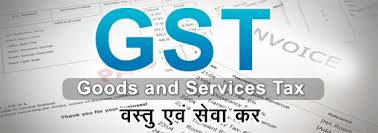Steps in Classification of Goods – GST
GST for goods has provided schedules in line with VAT but the principles are based on the customs classification (also adopted in central excise) The need to classify properly is understood by all as it may lead to payment of differential tax with credit in case of self-correction and maybe without credit otherwise. Also no credit beyond limitation period for ITC post the annual returns. We have made an attempt to share the possible steps to be followed to arrive at appropriate heading.
Understand the global scenario and then the Indian scenario of that business or activity, the alternative methods or variants, the domain knowledge of the transaction, Whether the GST paid is available as ITC and the customer profile. A brief study including web search for images.
The further steps involved are:
1. The first step is to find out the classification heading based on the description and nature of the goods being supplied as per the notified rate schedule. Confirm that the product is also similarly or more specifically covered in the Customs Tariff and HSN 2017. The Section Notes and Chapter Notes to the Schedule to be read.
2. If there is no ambiguity, the classification is final and there is no need to apply the non-statutory principles of classifications set out in commentary section above.
3. If there is ambiguity, first reference shall be made to the Rules for interpretation of the Customs Tariff. Find the trade understanding of the terms used in the Schedule, if the meaning is not clear. If the trade understanding is not available, the next step is to refer to the technical or scientific meaning of the term. If none of the above are available reference may be had to the dictionary meaning or ISI specifications. Evidence may be gathered on end use or predominant use.
4. In case of the unfinished or incomplete goods, ascertain if the unfinished product has the essential characteristics of the finished product, if yes, apply that classification to the unfinished product.
5. If the classification is not ascertained as per point (e) mentioned above, find out the heading, which is more specific to the nature of product. This is a very important rule.
6. If the classification is still elusive, ascertain which material gives the article its essential characteristics and use that classification.
7. While doing so, consideration as to the following non-statutory principles can also applied for classification, however it should be understood that statutory principles shall have precedence over non-statutory principles.
8. Find the trade understanding of the terms if the meaning is not clear.
9. If the trade understanding is not available, the next step is to refer to the technical or scientific meaning. However if the tariff headings have technical or scientific meanings, then that has to be ascertained first before the test of trade understanding. If none of the above is available, reference may be made to the dictionary meaning or ISI specifications. Evidence may be gathered on end use or predominant use.
10. Once the goods are appropriately classified, then examine whether any exemption or concessional notification exists. Here care is to be taken to ensure conditions if any are complied with/compliable in full or substantially.
11. It is suggested to classify and to declare all the goods supplied including by-products, intermediate products, stock transfers, job work, waste and scrap, if any generated during the manufacturing process.
12. The supplier should as far as possible, provide the description of the goods as it is to be invoiced or as it is understood in the market (including brand name, if any). It would be advisable to enclose trade literature. The HSN description need not be reproduced. For example, the spindle assembly is basically a part of wiper for cars. Instead of declaring the same as ‘Parts of Wiper’, declare the same as ‘Spindle Assembly for Wipers of Cars.’

It is possible that the rate arrived at is higher than what others in organized/unorganized trade/industry are using. Also that there is a doubt. In such cases, till clarity emerges, the additional action points could be as under:
a. Represent truthfully background that specifies of the goods seeking, conformity fairness equality, pounding reasons for rate sought. This needs to be made to the GST council as well as all the State GST Commissioners.
b. Simultaneously on could go through the association who represent many.
c. Go for an advance ruling. If satisfied with finding all right, if not go for appeal.
d. In case one is not getting relief then writ to high court may also be an option.